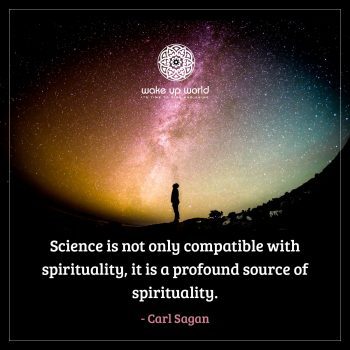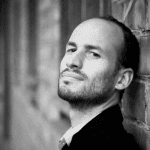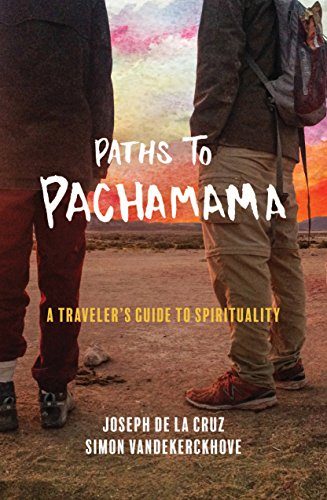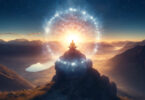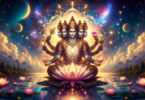May 30th, 2018
Guest writer for Wake Up World
Famously, the Book of Genesis opens with the presumptuous statement that, “In the beginning … God created the heavens and the earth” (Genesis 1:1). This very first line of the Bible has put the Christian faith – or any other faith for that matter – in direct contrast with the scientific worldview, which states that everything is created by chance and that matter is all that exists. Between both irreconcilable ideologies, there lies a world of endless possibilities to explore that may shed a more comprehensive light on the extraordinary nature of our existence.
The materialistic vs. spiritualistic worldview has been a source of much dispute between scientific hardliners and religious fundamentalists. To figure out which of the two is more credible, let’s take a closer look at both positions.
According to scientists, our universe started off with a Big Bang that created all mass, out of which solar systems, planets, humans, etc. came into existence through gradual evolution. That is in all likelihood what happened, but scientists are unable to explain how from the very moment the explosion occurred, certain regularities were established that were indispensable for our planet and, indeed, the whole universe to exist. They are what scientists call the physical constants and they have stayed pretty much the same all over the known universe from the onset of its tumultuous creation.
These fundamental regularities, such as the speed of light, the mass of an electron and the gravitational constant, are so ingeniously constructed that small changes in any of them would have meant that life on our planet would be impossible. To quote the late physicist Stephen Hawking from his groundbreaking book, A Brief History of Time:
“If the rate of expansion one second after the Big Bang had been smaller by even one part in a hundred thousand million million, the universe would have collapsed before it ever reached its present size.”
How can scientists possibly begin to attribute this ingenious design to mere chance? Did we just happen to win the universal lottery a couple of billion times in a row? And did intelligent life somehow randomly appear out of this primordial soup, like a whirlwind that could go through a pile of rubble and leave behind a beautifully constructed cathedral if it were given enough time?
It would seem that the scientific standpoint that this universe was created randomly is entirely negligible; its build-up is simply too accurate to be relegated to chance. Surely it makes a lot more sense to attribute such an intelligent design to an intelligent designer? This conclusion brings us directly within the realm of religions.
All major religions believe in the existence of a divine architect, and most of them seem to think that a human omnipotent being is responsible for creating the universe. If that is indeed the case, what about all the other life forms out there that are equally complex, like the billions of bacteria that work hard to keep us alive every day or the pods of whales that communicate through subsonic sound waves? Were they all just created for our survival, for our amusement or for our bewilderment? Are they all random feats of nature while only our blessed species is part of a grand design?
If humans truly are a reflection of god on Earth, who was our god when the dinosaurs roamed the planet? Was god a T-Rex then? Or was our anthropomorphic god patiently sitting by and waiting for the right time to introduce his spitting image onto his world? And why didn’t he act sooner? Why did it take the almighty god billions of years to get us here? Because, let’s not forget, if the history of our planet is a twenty-four hour clock, we humans would make our appearance only in the very last minute. If god really is the coach that puts mankind central in his grand game plan, why did he wait so long to bring us in?
In the vast grey zone between the two dualistic and incompatible worldviews, a more comprehensive explanation for the ingenuity of life’s design can be found that is in line with both the spiritualistic outlook and with scientific findings. Recent discoveries in quantum physics, many of which are outlined in Paths to Pachamama, show that the tangible reality of our everyday lives is some kind of carefully and ingeniously crafted illusion, a field of infinite possibilities with a deeper order of existence hiding beneath it.
This primary level of reality gives birth to all the objects and appearances of our physical world and connects everything via an invisible web of direct communication by way of quantum entanglement. Every conscious being within this intricate field of possibility subtracts information from an underlying cosmic memory and feeds back to it via experiences, observations and mental processes. This information, in the form of holographic traces that all beings leave behind in the universal field, meticulously coordinates all elements that are part of it and may explain the astonishing degree of coherence we find everywhere we look.
However outlandish this perspective may seem, it is firmly grounded in scientific research and is in line with the core concepts of all major religions and spiritual teachings.
Instead of clinging on to the extreme viewpoints of two idealistic opposites, perhaps it’s time we embrace one consolidated vision of reality: that of a supreme collective consciousness in a field of infinite opportunity. We are not isolated beings in a random composition, but are a creative part of a jointly coordinated design, and together we are responsible for shaping our world. It’s about time we start doing it right.
About the author:
Simon Vandekerckhove is co-author of the newly released book, ‘Paths to Pachamama: A Traveler’s Guide to Spirituality’, grew up in Bruges, Belgium. He spent a few years abroad studying in Spain, teaching in Thailand, working around Australia and backpacking through South America. Throughout his journeys, the symbolism and coincidences he’s experienced have widened his perspective to both the physical and spiritual dimensions. Now he feels it’s both his duty and obligation to share the lessons bestowed upon him during his years of travel and provide some guidance to others who are ready to cross the threshold of their comfort zone in search of exploration and adventure.
You can learn more on the website pathstopachamama.com, or pick up a copy of Simon’s book…
‘Paths to Pachamama: A Traveler’s Guide to Spirituality’ is a story of travel, love and loss unlike any other. Written independently, two stories of self-discovery gracefully intertwine and poetically prove no matter our unique journeys, we all travel the same path. Joseph De La Cruz from Boulder, Colorado and Simon Vandekerckhove from Bruges, Belgium meet on the road and now combine forces, offering a backpacker’s perspective of the inward and outward scope of their experiences. A tale suitable for any traveler on the adventure known as life, ‘Paths to Pachamama: A Traveler’s Guide to Spirituality’ will show you, there’s more to this world than meets the eye if only you’re willing to look hard enough.

If you've ever found value in our articles, we'd greatly appreciate your support by purchasing Mindful Meditation Techniques for Kids - A Practical Guide for Adults to Empower Kids with the Gift of Inner Peace and Resilience for Life.
In the spirit of mindfulness, we encourage you to choose the paperback version. Delve into its pages away from screen glare and notifications, allowing yourself to fully immerse in the transformative practices within. The physical book enriches the learning process and serves as a tangible commitment to mindfulness, easily shared among family and friends.
Over the past few years, Wake Up World has faced significant online censorship, impacting our financial ability to stay online. Instead of soliciting donations, we're exploring win-win solutions with our readers to remain financially viable. Moving into book publishing, we hope to secure ongoing funds to continue our mission. With over 8,500 articles published in the past 13 years, we are committed to keeping our content free and accessible to everyone, without resorting to a paywall.

